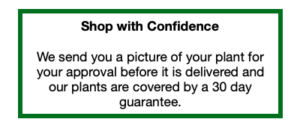General Landscape Uses: A versatile tree or trimmed shrub in formal and informal landscapes, especially near the coast. It can be used as an accent or a specimen tree in residential and commercial landscapes, as a trimmed or informal hedge, and in buffer plantings.
Ecological Restoration Notes: A key element of coastal forests along the upland margin of mangrove swamps.
Description: Medium tree or large shrub with an open crown. Branches mostly erect or ascending. Trunks leaning, 6-18 inches or more in diameter, often branching near the ground. Leaves 2-4 inches long, leathery, green or covered with silvery hairs.
Dimensions: Typically 20-40 feet in height; to 51 feet in South Florida. The silver form is often smaller. Can be as broad as tall or broader.
Growth Rate: Moderate.
Range: Monroe County Keys north mostly along the coast to Brevard and Levy counties; Bermuda, West Indies, Mexico, Central America, South America, Galapagos and western Africa.
Habitats: Coastal hammocks and margins of mangrove swamps; understory shrub in pine rocklands on Long Pine Key in Everglades National Park.
Soils: Periodically inundated to moist, well-drained to moderately well-drained freshwater or brackish soils, with or without humusy top layer.
Nutritional Requirements: Moderate to low; it prefers soils with organic content, but will still grow reasonably well in nutrient poor soils.
Salt Water Tolerance: Moderate; tolerates brackish water or occasional inundation by salt water.
Salt Wind Tolerance: High; can tolerate moderate amounts of salt wind without significant injury.
Drought Tolerance: Moderate to high; plants growing in extremely dry soils may die during extended periods of drought.
Light Requirements: Full sun.
Flower Color: Whitish.
Flower Characteristics: Inconspicuous. Essentially dioecious, with male and female flowers on separate plants; some male flowers contain a single ovule.
Flowering Season: All year; peak in summer.
Fruit: Scaly cone-like heads turning purple-brown, shattering when ripe.
Wildlife and Ecology: This is one of the most important host trees for epiphytes in South Florida, and provides significant food and cover for birds and other wildlife. The flowers, leaves and rough bark attract many insects and spiders, which, in turn, provide food for insect-eating birds. Occasional larval host plant for martial hairstreak (Strymon martialis) butterflies and tantalus sphinx (Aellopus tantalus) moths. Nectar plant for amethyst hairstreak (Chlorostrymon maesites) and other butterflies. The seeds are primarily dispersed by water.
Horticultural Notes: Can be grown from seed and cuttings. The silver form is not true to seed.
Comments: The wood can be used to make a high-grade charcoal, which supported an extensive industry in southern Florida in the eary 1900s. See also a 2022 post on the Treasure Coast Natives blog about the “witch’s broom” deformity observed occasionally in Buttonwood. A form with silver leaves (silver buttonwood) is often referred to as var. sericea, but it is not a true taxonomic variety. Silver buttonwood is found in hypersaline situations in the Florida Keys and occasionally along the southwest Florida coast. It is widely planted in landscapes, but is not native to most areas where it is planted.










Janis Silver –
We love the tree! And the installer was very personable.
Randolph Arvelo –
Great service all around! Thank you Smarty Plants Nursery.